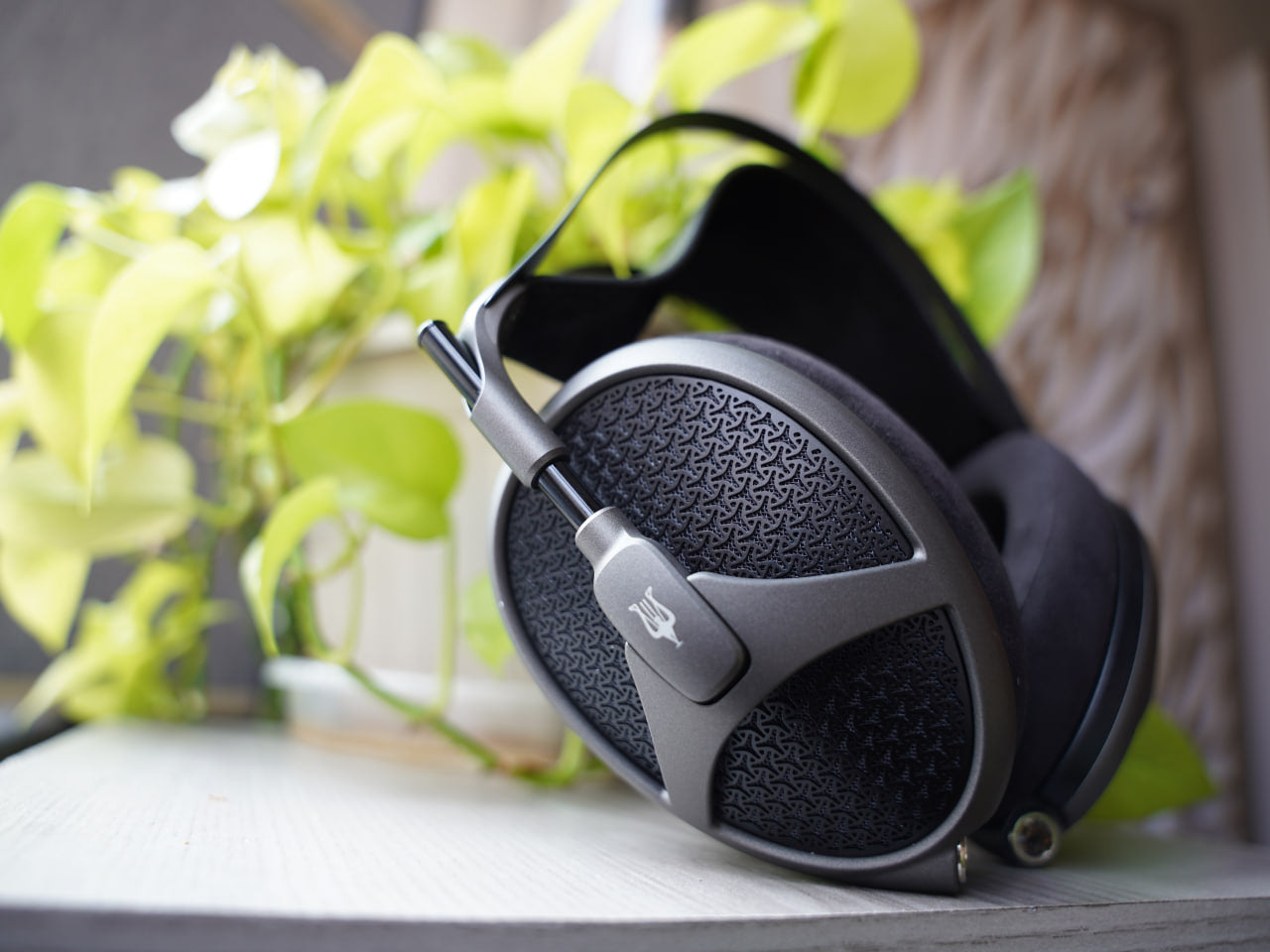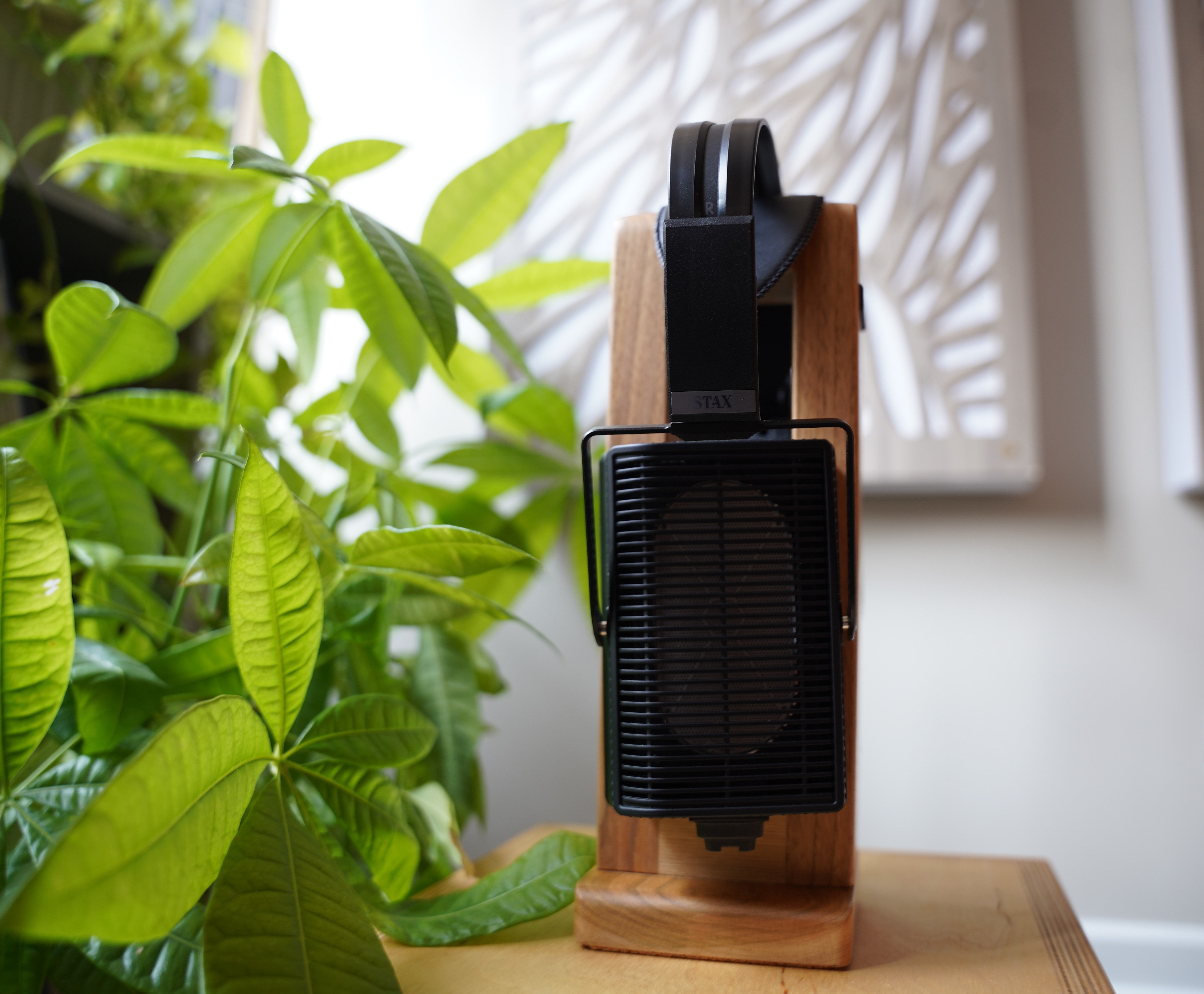Meze Audio has carved a name for themselves for making both visually and sonically impressive headphones. They have been quite busy in the market recently with a number of recent releases that have taken their place as top contenders of their respective categories. While this latest offering isn’t totally new, there are a few new changes that are worth mentioning.
Build
If Meze is know for one thing, it’s the care that goes into their designs. All of their offerings have been acclaimed for their comfort and attention to detail, and the new Elite Tungsten are no exception to this. They continue to use the winged headband system that creates by far the most weightless headphone experience I have had yet. Adding to this, or rather not, is their incredibly light weight compared to some of the other flagship offerings today. Weighing in at 430g they are probably one of the lightest planar headphones on the market. On top of this, the Elite have a great range of articulation for any head shape.
The package itself exudes quality. Upon first opening the box you are presented with the most official looking black case. It’s hard covered and seems like it would protect the headphones well. The standard package includes a ¼ in cable and comes with two sets of pads. The new angled Alcantara pads and the original leather ones. To me the angled pads actually improve the ergonomics a bit over the older flat pads. They seem to even more effortlessly contour to the shape of my head. While we will discuss the sound differences later, I prefer the Alcantar in terms of comfort alone. They are extremely soft to the touch and don’t get warm even when worn for extended periods of time.
The design of the drivers is somewhat different than what you would see in a traditional planar. For the new tungsten the driver is the same as the Elite. They use a technology called Isodynamic Hybrid Array which for anyone who has spent much time looking at planar drivers looks a bit odd. They seemingly have magnets covering a large portion of the driver. They say this helps with accuracy around the shape of the ear. I did find when I’ve listened to Empyrean and Elite they do tend to be sensitive to where you place them in relation to height around the ears.
Sound
No matter which pads you prefer there are a number of traits the Elite excel at. They have amazing clarity, sense of space, and speed. While they may not be the most resolving headphones out there they present as much detail as you could want in a way that is never fatiguing. It’s a headphone I have no issues listening to for hours on end. On the original Elite, I remember using the leather pads the most as they were a bit fuller sounding with better weight to the notes. The Alcantara were much more laid back with incredibly smooth vocals. There was really no perceptible difference in staging. Now the Alcantara pads are offered in an angled version and a decently steep angle at that. They are definitely thicker than the old ones as well. What this achieves is a wider soundstage and makes vocals a bit more forward. It also seems to offer a bit more depth and detail to the stage than the previous flat pads. In some ways, I ended up enjoying these new pads more than the leather. Though now, I think pad swapping depending on the mood is much more viable as there is no clear winner. Each has their strengths.
Bass on the Elite really excels and is delivered full bodied and with good speed. The leather pads offer a bit more bass presence and extension while the Alcantara offers a bit leaner presentation but still maintains good impact. Moving upward the mids transition well from the bass and remains quite balanced. The timbre of the mids especially vocals is spot on. One thing the Elite do well is present themselves naturally. I think the Alcantara are my preference here with a bit more definition to the center image and incredibly smooth vocals without sounding too smooth. The treble is where most of Meze’s headphones get their “easy listening” nature from. It’s a bit softer than how the rest of the range is presented. That’s not to say there still isn’t good energy but it’s definitely less emphasized than the mids.
One of my new favorites has been “Saint Claude” by Christine and the Queens. The Elite deliver an incredible sense of space with wide stage and excellent imaging. Their clean, crisp presentation allows the Elite to really highlight all that’s going on in the song, His voice comes over incredibly naturally and with good texture. Sounds float around and can be picked up with pinpoint accuracy. The whole recording is quite fast and crisp.
“Cocaine and Abel” by Amigo the Devil really shows off their ability to resolve vocals. The whole song is just incredibly smooth, and the space presented by the Elite really allows you to feel the haunting nature of the song. One thing they do so well is creating a space and filling every space with in it. Timbre and texture of his voice is very good. The violins are presented well to the rear with good accuracy and body.
Meze Elite Tungsten Vs ZMF Caldera
In the more “easy listening” category of headphones, these two brands seem to be the heavy weight champions. Fit and finish overall could not be more different. Meze is a more refined, tech heavy build. ZMF is more emotive and expressive with its colorful wooden cups. Both, however, feel very premium in their own right.
In terms of sound, they offer quite different presentation styles. Meze is cleaner and more precise, while the Caldera offers a more romantic sound. Caldera has a bit wider staging overall and a bit more weight and impact to the low end than the Elite. I think the Elite edge them out in detail by a bit. Both are incredibly easy and enjoyable to listen to.
Overall, the Meze Elite Tungsten doesn’t stray to far from the original in terms of sound other than the improved depth and staging on the angled pads. The finish on the Tungsten look much better and further refine the looks of the Elite in my opinion. They remain a top tier planar with an incredibly natural sound that promise hours of fatigue free listening both sonically and comfort wise.




Leave a comment
All comments are moderated before being published.
This site is protected by hCaptcha and the hCaptcha Privacy Policy and Terms of Service apply.